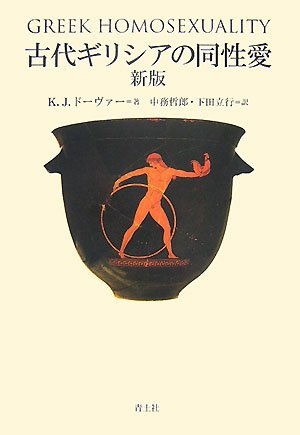27 0 0 0 OA カンビュセス・エピソードについて : Hdt. III36
- 著者
- 中務 哲郎
- 出版者
- 日本西洋古典学会
- 雑誌
- 西洋古典学研究 (ISSN:04479114)
- 巻号頁・発行日
- vol.23, pp.18-29, 1975-03-29 (Released:2017-05-23)
That the Histories of Herodotos contains those episodes which are narrated apparently m the historical context, but, in fact, belong to folkliterature or fiction by Hdt., has been pointed out from various points of view. In this paper, the present writer attempts to demonstrate some episodes not to be the historical facts in the light of the comparative study of folkliterature. The episode of III 36 runs as follows: Kambyses, offended at Kroisos' admonition, was about to kill him. But the servants who had been ordered to kill Kroisos sheltered him, calculating that if Kambyses should miss Kroisos, they would produce him for a reward, and that if the king should show no sign of regret, they could kih him thereupon (36, 5). Soon afterwards, when they noticed Kambyses missing Kroisos, they announced that he was still alive. Kambyses rejoiced at Kroisos' existence but executed the men who had saved his life (36, 6). While the first section of this episode is said to be based on the motif of the Story of Ahikar (W. Aly), the second part may be regarded as a fiction by Hdt. for several reasons: 1) Ancient testimonies differ extremely as to Kroisos' career after the fall of Sardis, so that his survival may be doubted. 2) A similar story is told in Sima Qian's Shiji(司馬遷,史記). In this story, however, the man who had been ordered to kill a loyal retainer was in a dilemma and killed himself. As compared with this pathetic story, the Herodotean episode of Kambyses sounds ratherlike the one that aims at displaying the narrator's wit. 3) "While in its original, the Story of Ahikar, the man who hides and preserves the sage is simply praised, Kambyses, in the Herodotean version, was pleased to know that Kroisos was safe, but punished the men who had saved him. The divergence from the archetype was probably due to Hdt.' own device. 4) Kambyses' treatment contradicts the account of I 137, where it is said that Persians never punish a man for a single offence, and that the normal Persian way is to balance faults against services. Indeed, for Dareios, services and offences of Sandoces offset each other (VII 194). 5) Hdt. reports another account containing a similar treatment. Taking a stormy passage over the Aegean, Xerxes was compelled, according to the captain's opinion, to let many passengers jump overboard to lighten the ship. On landing at the Asian coast, Xerxes rewarded the captain with a gold crown for saving the King's life, but beheaded him as being responsible for the death of a number of Persians (VIII 118). In this motif (to rejoice but punish or to praise but punish) , Hdt. imitates himself. 6) Ailianos, too, informs us of an interesting Persian custom, according to which if a man advises the king and proves to be serviceable, he is awarded the gold brick on which he stood advising, but at the same time, is flogged for his hybris (V. H. 12, 62). This account suggests that the Greeks including Hdt. took the Persians for a legally rigorous nation. And perhaps such a presumption caused Hdt. to invent the humorously rigorous treatment of Kambyses. In a more orlesssimilarway examined are I 21f, I 27, II 107, III 85ff, V 12, VI 52, VI 125 and III 31, III 34, III 119, IV 3f. In these cases, thepresentwriter believes, we must see in Hdt. a folklorist who picks up folktales and retells them rather than a historian who collects historical events and interprets them.
7 0 0 0 古代ギリシアの同性愛
- 著者
- K・J・ドーヴァー著 中務哲郎 下田立行訳
- 出版者
- 青土社
- 巻号頁・発行日
- 2007
- 著者
- 中務 哲郎
- 出版者
- 日本西洋古典学会
- 雑誌
- 西洋古典学研究 (ISSN:04479114)
- 巻号頁・発行日
- vol.61, pp.89-96, 2013
4 0 0 0 OA 古代ギリシア・ローマ喜劇と狂言の比較研究
3 0 0 0 OA カンビュセス・エピソードについて : Hdt. III36
- 著者
- 中務 哲郎
- 出版者
- 日本西洋古典学会
- 雑誌
- 西洋古典學研究 (ISSN:04479114)
- 巻号頁・発行日
- vol.23, pp.18-29, 1975-03-29
That the Histories of Herodotos contains those episodes which are narrated apparently m the historical context, but, in fact, belong to folkliterature or fiction by Hdt., has been pointed out from various points of view. In this paper, the present writer attempts to demonstrate some episodes not to be the historical facts in the light of the comparative study of folkliterature. The episode of III 36 runs as follows: Kambyses, offended at Kroisos' admonition, was about to kill him. But the servants who had been ordered to kill Kroisos sheltered him, calculating that if Kambyses should miss Kroisos, they would produce him for a reward, and that if the king should show no sign of regret, they could kih him thereupon (36, 5). Soon afterwards, when they noticed Kambyses missing Kroisos, they announced that he was still alive. Kambyses rejoiced at Kroisos' existence but executed the men who had saved his life (36, 6). While the first section of this episode is said to be based on the motif of the Story of Ahikar (W. Aly), the second part may be regarded as a fiction by Hdt. for several reasons: 1) Ancient testimonies differ extremely as to Kroisos' career after the fall of Sardis, so that his survival may be doubted. 2) A similar story is told in Sima Qian's Shiji(司馬遷,史記). In this story, however, the man who had been ordered to kill a loyal retainer was in a dilemma and killed himself. As compared with this pathetic story, the Herodotean episode of Kambyses sounds ratherlike the one that aims at displaying the narrator's wit. 3) "While in its original, the Story of Ahikar, the man who hides and preserves the sage is simply praised, Kambyses, in the Herodotean version, was pleased to know that Kroisos was safe, but punished the men who had saved him. The divergence from the archetype was probably due to Hdt.' own device. 4) Kambyses' treatment contradicts the account of I 137, where it is said that Persians never punish a man for a single offence, and that the normal Persian way is to balance faults against services. Indeed, for Dareios, services and offences of Sandoces offset each other (VII 194). 5) Hdt. reports another account containing a similar treatment. Taking a stormy passage over the Aegean, Xerxes was compelled, according to the captain's opinion, to let many passengers jump overboard to lighten the ship. On landing at the Asian coast, Xerxes rewarded the captain with a gold crown for saving the King's life, but beheaded him as being responsible for the death of a number of Persians (VIII 118). In this motif (to rejoice but punish or to praise but punish) , Hdt. imitates himself. 6) Ailianos, too, informs us of an interesting Persian custom, according to which if a man advises the king and proves to be serviceable, he is awarded the gold brick on which he stood advising, but at the same time, is flogged for his hybris (V. H. 12, 62). This account suggests that the Greeks including Hdt. took the Persians for a legally rigorous nation. And perhaps such a presumption caused Hdt. to invent the humorously rigorous treatment of Kambyses. In a more orlesssimilarway examined are I 21f, I 27, II 107, III 85ff, V 12, VI 52, VI 125 and III 31, III 34, III 119, IV 3f. In these cases, thepresentwriter believes, we must see in Hdt. a folklorist who picks up folktales and retells them rather than a historian who collects historical events and interprets them.
3 0 0 0 古代ギリシアの同性愛
- 著者
- ケネス・ドーヴァー著 中務哲郎下田立行訳
- 出版者
- リブロポート
- 巻号頁・発行日
- 1984
2 0 0 0 IR 『オデュッセイア』におけるポリュペモス譚について
- 著者
- 中務 哲郎
- 出版者
- 京都大学
- 雑誌
- 西洋古典論集 (ISSN:02897113)
- 巻号頁・発行日
- vol.7, pp.1-22, 1990-05-31
この論文は国立情報学研究所の学術雑誌公開支援事業により電子化されました。The Polyphemus story in the Odyssey is based on a popular folktale, wide-spread throughout the world. Since the time of Wilhelm Grimm, more and more versions of this folk-tale have been collected and various elements of the Homeric version have been analyzed by many scholars. Some parts of the Homeric version correspond with the folk-tales and illustrat ions in Greek art, while others differ. So, a comparative study of Homer's story with other versions will suggest what Homer borrowed and what he invented. The Homeric version consists of three main episodes (the blinding of the ogre ; the name-trick ; and the escape of the hero), and omits apparently the motif of the magic ring. Each episode contains a variety of incidents, but here I shall consider only four of these. They are amusing in themselves and also illustrate Homer's art of story-telling. I have used O. Hackman's and J. G. Frazer's collections of folk-tales as the basis for my study. 1. The inebriation of Polyphemus, In some folk-tale versions, the giant gets drunk with his own wine. Polyphemus, however, drinks not wine but milk and is made drunk by the marvellous wine given to him by Odysseus. Perhaps Homer changed the drunken ogre into a milk-drinker and invented Odysseus' offering of wine to Polyphemus to introduce the gruesome present from Polyphemus and the name-trick of Odysseus. 2. The method of escape. The commonest method of escape in the folk-tales is for the heroes to cover themselves with an animal skin and to crawl out of the cave. Odysseus and his companions, however, escaped--Odysseus clinging to the belly of one ram ; his companions each tied to three rams. There has been much speculation about the reason why Homer did not follow the usual method. I think that Homer chose his version for the sake of variation and contrast, with the episode of the Seirenes in mind. When Odysseus sailed past the Seirenes' island, he alone was tied to the mast, in contrast to the escape from Polyphemus when only Odysseus was not tied to a ram. Thisuse of variation and contrast is found in many other episodes. 3. The motif of the magic ring. Many folk-take versions end with the episode of the talking ring or other magic objects. After the hero has escaped from the cave, he mocks the giant, who throws down a ring as a gift to the victor. The moment he puts it on his finger, it cries out, 'Here I am!', and guides the blinded giant to him. The hero escapes only by cutting off his finger. While A. B. Cook, D. L. Page and C. S. Brown have attempted to find the traces or transformations of this motif in the Odyssean story. A. Kurumisawa argues that the Homeric version cannot include the ring motif. Considering the difference between epic and folk-tale, I am inclined toagree with the former theory. 4. The origin of the name 'Utis'. According to Hackman, the trick with the name 'Utis' ('No body') does not belong to the Polyphemus story but is borrowed from another popular folk-tale. in which a human being outwits a fairy or a demon with the deceptive name, 'Myself '. The name 'Utis' seldom occurs in genuine folk-tales. I am not convinced by the argument that 'Utis' is not a false name but a nickname derived from Etruscan forms of Odysseus or the word 'us' (ear). It seems more likely that Homer borrowed the idea of the name-trick from some unrelated folk-tale and invented 'Utis' for his story. He appreciated that the main point of the folk-tale was the giant's defeat by a little man and devised an appropriate name for the little hero. 'Utis' means 'Nobody' or 'Worthless One', but the 'Worthless One' conquers the mighty giant. Polyphemus (Much Famed). If Homer invented Odysseus' offering of wine to Polyphemus, it is probable that he also invented the name 'Utis'.
2 0 0 0 IR ホメロスにおけるアポストロペ-について
- 著者
- 中務 哲郎
- 出版者
- 京都大學文學部
- 雑誌
- 京都大學文學部研究紀要 (ISSN:04529774)
- 巻号頁・発行日
- no.32, pp.p155-183, 1993-03
この論文は国立情報学研究所の学術雑誌公開支援事業により電子化されました。
1 0 0 0 岡道男先生の逝去を悼む
- 著者
- 中務 哲郎
- 出版者
- 日本西洋古典学会
- 雑誌
- 西洋古典学研究 (ISSN:04479114)
- 巻号頁・発行日
- vol.49, pp.215-216a, 2001
1 0 0 0 ヘロドトス『歴史』の序文・終章・キュクロス観
- 著者
- 中務 哲郎
- 出版者
- 日本西洋古典学会
- 雑誌
- 西洋古典学研究 (ISSN:04479114)
- 巻号頁・発行日
- vol.34, pp.26-37, 1986
ヘロドトス『歴史』のテーマは何か,という大問題にこのような小論で答えようとするのは,いわば「鶏刀を以て牛を割く」類の暴挙との誹りを受けるかもしれないが,以下に筆者の考えの大要を述べてみたい.
1 0 0 0 OA ヘロドトス『歴史』の序文・終章・キュクロス観
- 著者
- 中務 哲郎
- 出版者
- 日本西洋古典学会
- 雑誌
- 西洋古典学研究 (ISSN:04479114)
- 巻号頁・発行日
- vol.34, pp.26-37, 1986-03-18 (Released:2017-05-23)
ヘロドトス『歴史』のテーマは何か,という大問題にこのような小論で答えようとするのは,いわば「鶏刀を以て牛を割く」類の暴挙との誹りを受けるかもしれないが,以下に筆者の考えの大要を述べてみたい.
1 0 0 0 プトレマイオス地理学
- 著者
- [プトレマイオス著] 中務哲郎訳 織田武雄監修
- 出版者
- 東海大学出版会
- 巻号頁・発行日
- 1986
1 0 0 0 ギリシア・ラテン文学の成立基盤としての民間伝承の研究
3年間の研究を通じて、古代の民間伝承がギリシア・ラテン文学をいかに豊かにしたか、また、民間伝承を摂取するにあたり詩人たちがいかなる創造的才能を発揮したか、が明らかにされた。中務は、エウリピデス『キュクロプス』が普通考えられているようにホメロス『オデュッセイア』9歌の挿話に基づくものではなく、前5世紀に民間に流布していたと思われる「ポリュペモスの民話」を前提にして作劇されたと仮定すれば、数々の疑問が解けることを指摘した。岡はソポクレス『オイディプス王』の解釈に民話の構造分析という新しい観点を導入した。オイディプス物語の類話(父親殺しの予言、捨て子のモチーフ)は民間説話としてもオリエントからギリシアに広く流布していたが、それらには共通の構造が認められる。その構造はこの類話群の最も基本的な要素であるばかりでなく、悲劇『オイディプス王』の構成をも律している。素材としての民間説話の構造分析を踏まえて悲劇の構造を再考した結果、オイディプスは不撓不屈の真実の追究者か、真実から逃れようとする人間か、という問題に関して極めて明快な解釈が得られた。中務はまた、古代ギリシアの昔話の実態に関して、昔話の呼称、担い手、語り出しと結びの形式、社会的役割などを、文学・哲学・歴史・弁論等の資料から明らかにできる限りを記述した。なお、中務は論文「ホメロスにおけるアポストロペーについて」において、文字以前の口承詩の伝統の中で、詩人と聴衆が相互に干渉しながら口承詩特有の技巧を発展させていったことを考証した。しかし、研究目的に掲げた「口承伝承と文書伝承の関係」一般に考察を及ぼすことはできなかったので、今後の課題としたい。



